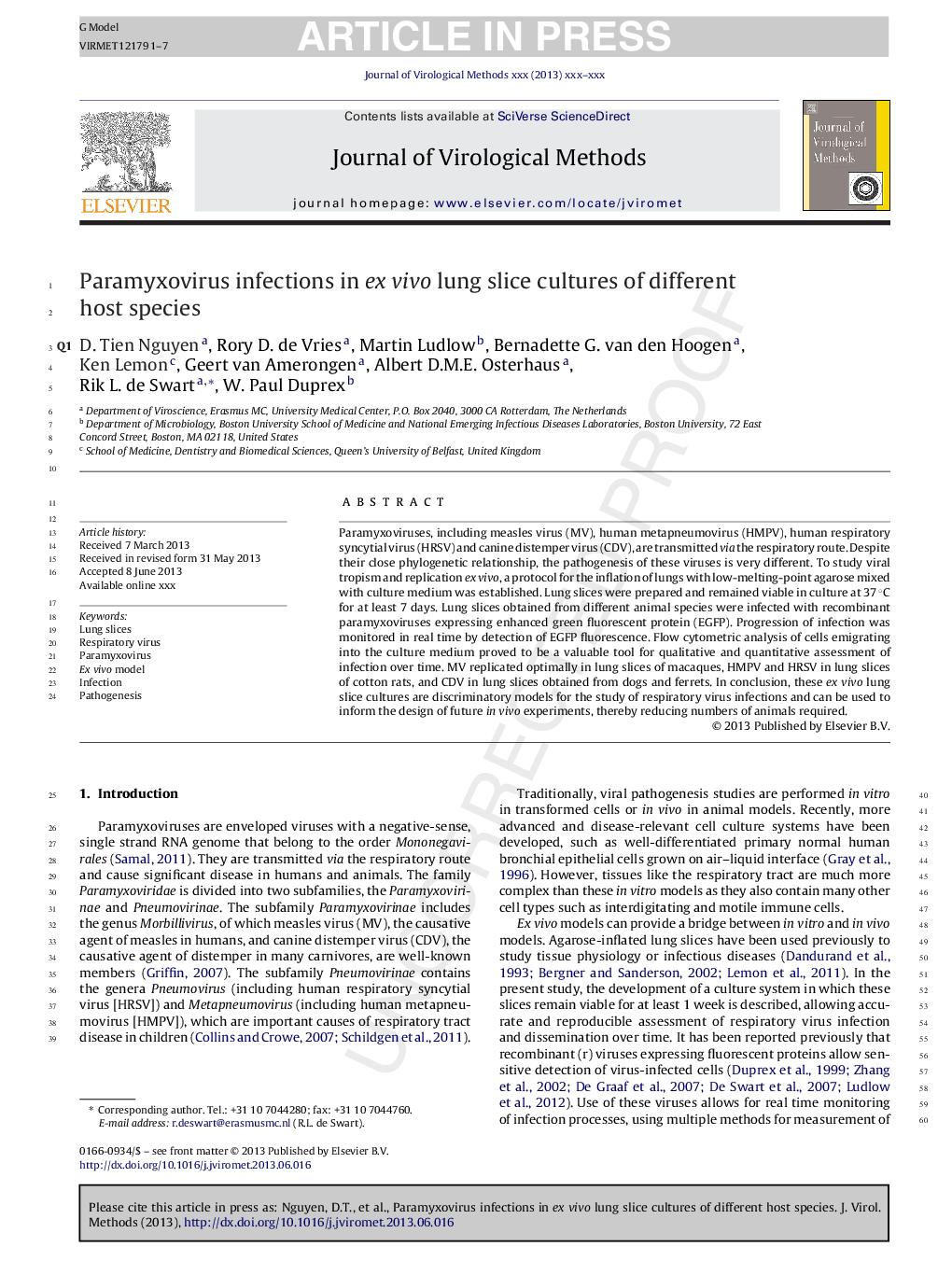| Article ID | Journal | Published Year | Pages | File Type |
|---|---|---|---|---|
| 6134316 | Journal of Virological Methods | 2013 | 7 Pages |
Abstract
Paramyxoviruses, including measles virus (MV), human metapneumovirus (HMPV), human respiratory syncytial virus (HRSV) and canine distemper virus (CDV), are transmitted via the respiratory route. Despite their close phylogenetic relationship, the pathogenesis of these viruses is very different. To study viral tropism and replication ex vivo, a protocol for the inflation of lungs with low-melting-point agarose mixed with culture medium was established. Lung slices were prepared and remained viable in culture at 37 °C for at least 7 days. Lung slices obtained from different animal species were infected with recombinant paramyxoviruses expressing enhanced green fluorescent protein (EGFP). Progression of infection was monitored in real time by detection of EGFP fluorescence. Flow cytometric analysis of cells emigrating into the culture medium proved to be a valuable tool for qualitative and quantitative assessment of infection over time. MV replicated optimally in lung slices of macaques, HMPV and HRSV in lung slices of cotton rats, and CDV in lung slices obtained from dogs and ferrets. In conclusion, these ex vivo lung slice cultures are discriminatory models for the study of respiratory virus infections and can be used to inform the design of future in vivo experiments, thereby reducing numbers of animals required.
Related Topics
Life Sciences
Immunology and Microbiology
Virology
Authors
D. Tien Nguyen, Rory D. de Vries, Martin Ludlow, Bernadette G. van den Hoogen, Ken Lemon, Geert van Amerongen, Albert D.M.E. Osterhaus, Rik L. de Swart, W. Paul Duprex,
